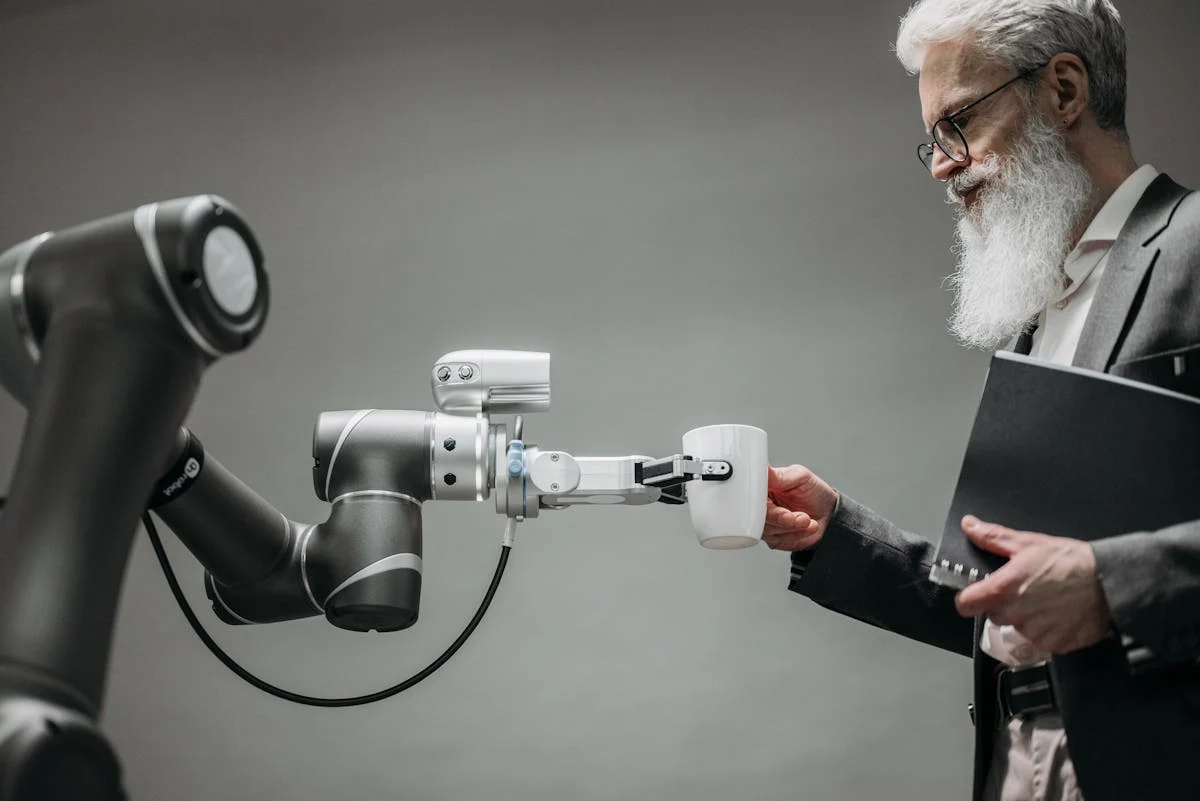As our global population ages, the demand for innovative solutions in elder care continues to grow. Robotics and artificial intelligence (AI) are emerging as powerful tools to support seniors and caregivers, both in homes and care facilities. These technologies aim to enhance independence, improve quality of life, and assist with daily activities. Let’s explore the current applications and future possibilities of robotics in elder care.
Current Applications
Companionship and Social Interaction
Socially assistive robots (SARs) are making significant strides in combating loneliness and providing emotional support for seniors. For example:
- Stevie: This SAR has been successfully deployed in nursing homes, offering companionship and assistance with daily tasks2.
- PARO: A therapeutic robot resembling a seal, PARO has shown effectiveness in reducing loneliness and depression among dementia patients, mimicking the benefits of pet therapy2.
These robots engage in conversations, play games, and even assist in reminiscence therapy, improving older adults’ overall quality of life.
Health Monitoring and Assistance
AI-powered systems are revolutionizing health monitoring for seniors:
- CarePredict: This wearable device tracks activities and alerts caregivers when deviations from normal behavioral patterns occur.
- AI-integrated smartphones: These devices make in-home health monitoring more accessible, allowing seniors to track vital signs and maintain healthier lifestyles.
Mobility Support
Robotics is enhancing mobility and independence for seniors:
- Robotic exoskeletons: Lightweight, robotics-enabled exoskeletons help seniors walk longer without fatigue, significantly improving their quality of life.
- TUG robots: These robots efficiently deliver medicine, meals, and supplies in healthcare facilities, freeing up nursing staff for more specialized care.
Future Possibilities
Enhanced AI Integration
The future of elder care robotics lies in more sophisticated AI integration:
- Personalized care plans: AI algorithms will analyze vast amounts of data to create tailored care strategies for each individual senior.
- Predictive health monitoring: Advanced AI systems will predict potential health issues before they become serious, allowing for proactive interventions.
Improved Human-Robot Interaction
As natural language processing and emotional recognition technologies advance, robots will become more adept at understanding and responding to human needs:
- Empathetic companions: Future robots will better recognize and respond to emotional cues, providing more nuanced emotional support.
- Seamless integration: Robots will become more intuitive to use, reducing the technological barrier for seniors.
Expanded Functionality
The capabilities of care robots will continue to expand:
- Advanced physical assistance: Future robots will be able to perform more complex physical tasks, such as helping seniors bathe or dress.
- Cognitive support: AI-powered systems will offer more sophisticated cognitive stimulation and memory support for seniors with conditions like mild cognitive impairment (MCI) or early-stage dementia.
Benefits and Considerations
The integration of robotics in elder care offers numerous benefits:
- Enhanced independence: Robots enable seniors to perform tasks they might otherwise struggle with, promoting autonomy.
- Improved safety: Features like fall detection and emergency alerts enhance the safety and security of elderly individuals.
- Reduced caregiver burden: By assisting with routine tasks, robots can alleviate stress on both professional and family caregivers.
- Consistent care: Robots can provide 24/7 monitoring and assistance, ensuring continuous support.
However, it’s crucial to consider ethical implications and potential challenges:
- Privacy concerns: The use of AI and monitoring systems raises questions about data security and personal privacy.
- Human touch: While robots can provide valuable support, they should complement rather than replace human care and interaction.
- Accessibility: Ensuring that robotic solutions are affordable and accessible to all seniors remains a challenge.
Conclusion
The role of robotics in elder care is rapidly evolving, offering exciting possibilities for enhancing the lives of seniors and supporting caregivers. As technology continues to advance, we can expect to see even more innovative applications that promote independence, safety, and well-being for our aging population. While challenges remain, the potential benefits of integrating robotics into elder care are immense, promising a future where aging is supported by cutting-edge technology and compassionate care.
References:
- Artificial Intelligence (AI) and Robotics in Elderly Healthcare (2023)
- Employing Socially Assistive Robots in Elderly Care (2022)
- Will Robotics and AI Be the Future of Elder Care? (2023)
- Robots for Elderly Care: Review, Multi-Criteria Optimization Model… (2023)
- Robots in Assisted Living Facilities: Scoping Review (2023)
- Robots for Elderly: Care, Companionship, Comfort (2024)



